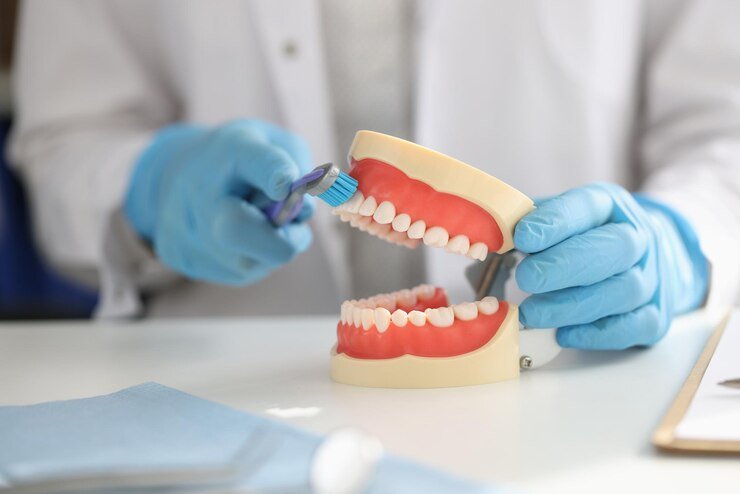Regular dental check-ups are crucial for the early detection and treatment of various oral health issues, ranging from cavities to more serious conditions like oral cancer. At our practice, we prioritize your oral health above all else. Our goal is to ensure that your teeth remain healthy, function optimally, and maintain an attractive appearance. We offer a comprehensive range of services, from routine cleanings and examinations to advanced restorative procedures, all conveniently available in our office.
Dental Implants
Dental implants Georgetown KY are sophisticated surgical devices that are inserted into the jawbone, acting as the roots for missing teeth. These implants create a robust foundation for artificial teeth, including crowns, bridges, or dentures. Typically constructed from titanium, dental implants integrate with the jawbone, providing exceptional strength and longevity.
The loss of a tooth, whether due to trauma or disease, can lead to various complications, including accelerated bone loss, impaired speech, and alterations in chewing patterns that may cause discomfort. By opting for a dental implants Georgetown KY to replace a missing tooth, patients can experience a significant enhancement in their overall quality of life and health.
Placing the implant
Most implant systems have five basic steps for placement of each implant:
Soft Tissue Reflection: An incision is performed along the crest of the bone, effectively dividing the denser attached gingiva approximately in two. This technique ensures that the final implant will be surrounded by a substantial band of tissue. The tissue edges, known as flaps, are retracted to reveal the underlying bone. An alternative approach, known as flapless surgery, involves the removal of a small circular section of tissue, matching the diameter of the implant, instead of creating flaps for the implant placement.
Drilling at High Speed: Once the soft tissue has been reflected, and a surgical guide or stent is utilized as needed, pilot holes are meticulously drilled using precision instruments. These drills operate at carefully controlled speeds to avoid overheating or causing pressure necrosis in the bone, which could compromise the surgical outcome.
Drilling at Low Speed: The initial pilot hole is subsequently enlarged with a series of progressively wider drills, typically ranging from three to seven steps, depending on the specific dimensions of the implant. Throughout this process, great care is taken to protect the osteoblasts and bone cells from thermal damage. To maintain a safe temperature, a cooling saline or water spray is employed, ensuring that the bone remains viable for successful implant integration.
Placement of the implant: The dental implants Georgetown KY screw is inserted and may possess self-tapping capabilities; alternatively, the designated site is prepared using an implant analog for tapping. Subsequently, it is secured in position with a torque-controlled wrench, ensuring that the applied torque is precise to prevent excessive stress on the surrounding bone. Excessive loading can result in bone necrosis, a condition known as osteonecrosis, which may hinder the successful integration or bonding of the implant with the jawbone.
Tissue Adaptation: The gingiva is molded around the entire implant to establish a robust band of healthy tissue encircling the healing abutment. Conversely, an implant may be “buried,” wherein the upper portion is sealed with a cover screw, and the surrounding tissue is closed to completely obscure it. This approach necessitates a subsequent procedure to expose the implant at a later time.



